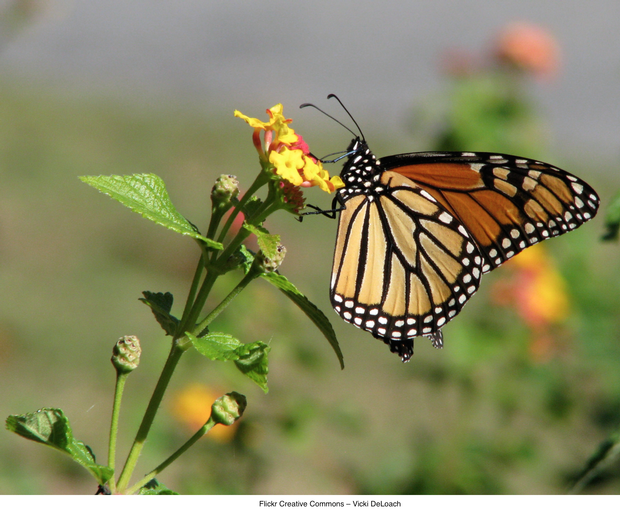 The Monarch Butterfly (Danaus plexippus) is a relatively large, black, and orange butterfly that can be found in the summertime throughout the Adirondacks. The Monarch is sometimes called the Milkweed Butterfly, as milkweed is its main food source that also happens to be found commonly throughout the Adirondack region. Additionally, the butterflies lay their eggs on this very milkweed. The hatchling caterpillars then feed on it until they chrysalise, again, on the milkweed. Therefore, the Adirondacks are an important factor in the life cycle of this species. The four stages of the Monarch's actual life cycle include the egg, the caterpillar stage, the chrysalis, and the adult butterfly.
The Monarch Butterfly (Danaus plexippus) is a relatively large, black, and orange butterfly that can be found in the summertime throughout the Adirondacks. The Monarch is sometimes called the Milkweed Butterfly, as milkweed is its main food source that also happens to be found commonly throughout the Adirondack region. Additionally, the butterflies lay their eggs on this very milkweed. The hatchling caterpillars then feed on it until they chrysalise, again, on the milkweed. Therefore, the Adirondacks are an important factor in the life cycle of this species. The four stages of the Monarch's actual life cycle include the egg, the caterpillar stage, the chrysalis, and the adult butterfly.
The Monarch Butterfly is best known for its massive migratory pattern. Around October, millions of monarchs leave the Adirondacks and travel thousands of miles to Mexico where they spend their time roosting in trees in colonies of thousands. In March, warmer weather triggers their migration Northward once again. The Adirondacks are very integtral to the Monarch's migratory path. Many Adirondack lakes and streams are on the Monarchs' migratory flight path to and from Mexico. Observation studies show that monarchs can fly if the temperature is above 60°F, and above 50°F if it is sunny. The sun allows a little leeway as the butterfly can warm its wings as it flies. These temperature tolerances are what make the Adirondacks both a haven in the spring and summer, and a death trap in the winter if Monarchs get caught in an unseasonal cold front.

